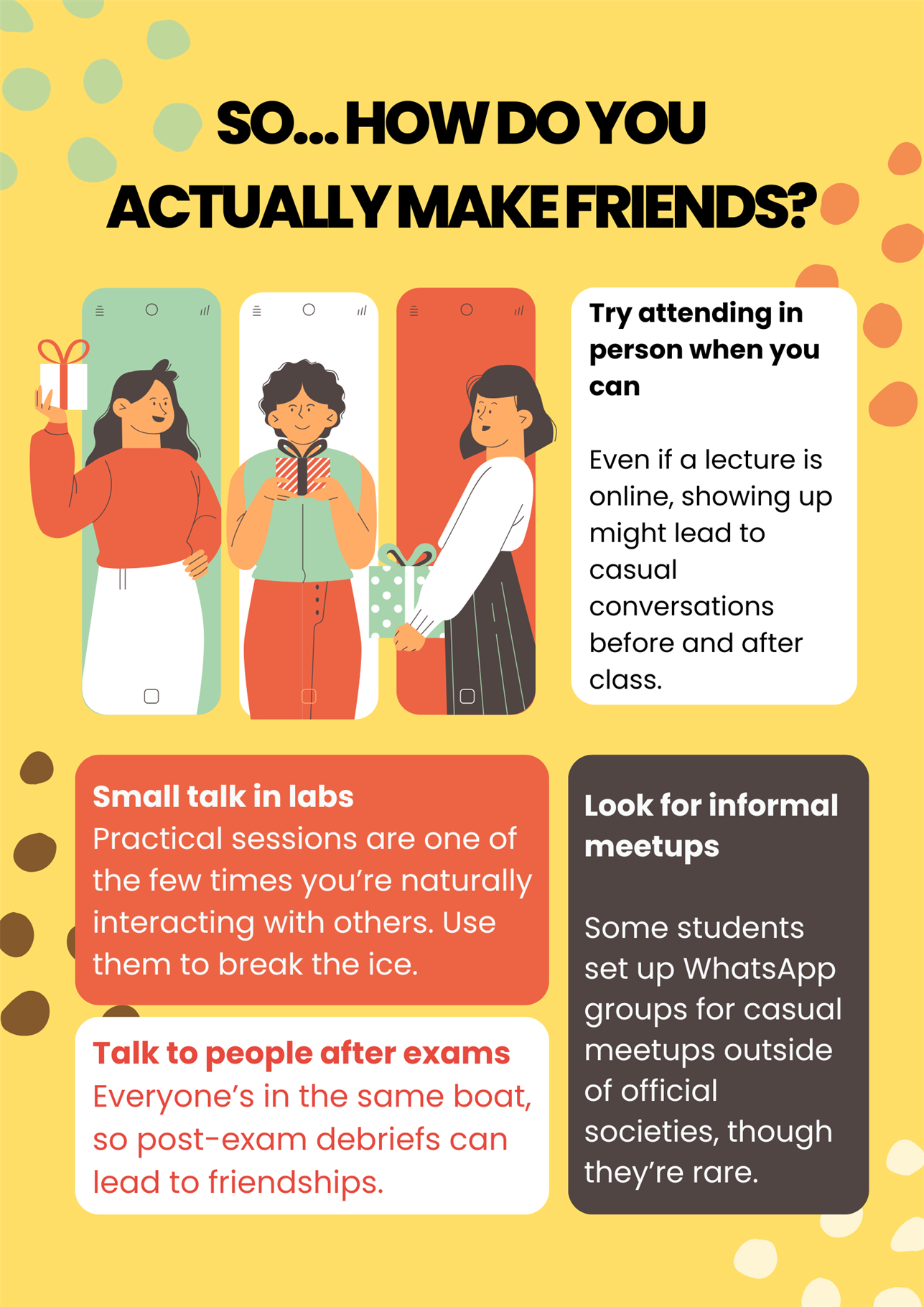University is often seen as a place where you meet lifelong friends, but it is not always that simple. With many courses being lecture-based, socialising can be more challenging than expected.
Where’s Everyone Gone?
One of the hurdles is low lecture attendance. With 3-4 lectures a day, often recorded and added to the Virtual Learning Environment, many students choose to watch some of them at home. This means fewer opportunities to naturally meet people in person.
Societies: Worth It?
Societies seem like a great solution, but they come with a cost. Ideally, societies should be free to encourage more students to join without worrying about fees. When events cost £3/£5/£10 per entry, not everyone can afford to go, making it harder to meet people outside of class.
Study Groups & Group Chats? Not Really.
Sometimes students prefer to be more independent. Most lectures focus on revision or consolidation, so people often choose to study alone. Even WhatsApp group chats don’t help much—conversations are often surface-level, and some people aren’t very active in them. Without seeing a face to the name, messages often get left on read, making it difficult to build real connections.


Advice for Lecturers and Planners:
According to the Columbia Center for Teaching and Learning (2021), creating a supportive and engaging classroom environment can significantly enhance community building. Techniques such as setting up the physical environment to encourage interaction, using social icebreakers, and incorporating metacognitive activities can foster a sense of belonging among students.
Lam (2022) suggests that building professional learning communities among university teaching staff can also be beneficial. Networking activities, professional development programs, and fostering collaboration across departments can help lecturers feel more connected and supported, which in turn can positively impact their students.
Conclusion
Making friends at university isn’t impossible - it just takes a bit more effort. The structure of some courses doesn’t naturally bring people together, and even online group chats can feel impersonal with surface-level conversations. Small steps (attending in person when possible, joining casual meetups, or even just talking to the person next to you in a lab) can make a huge difference. Wouldn’t it be great if universities recognized this and actively created more social spaces for students? Until then, it’s up to us to find ways to connect.
References:
- Columbia Center for Teaching and Learning (2021). Community Building in the Classroom. Columbia University. Available at: https://ctl.columbia.edu/resources-and-technology/teaching-with-technology/teaching-online/community-building/ (Accessed: 1 April 2025).
- Lam, A. M.-H. (2022). 7 ways to build learning communities for lecturers. Times Higher Education. Available at: https://www.timeshighereducation.com/campus/how-cultivate-learning-communities-among-university-teaching-staff (Accessed: 1 April 2025).
Words by: Nafisah Khan, Student Advisor Equity Champion, Biomedical Science student